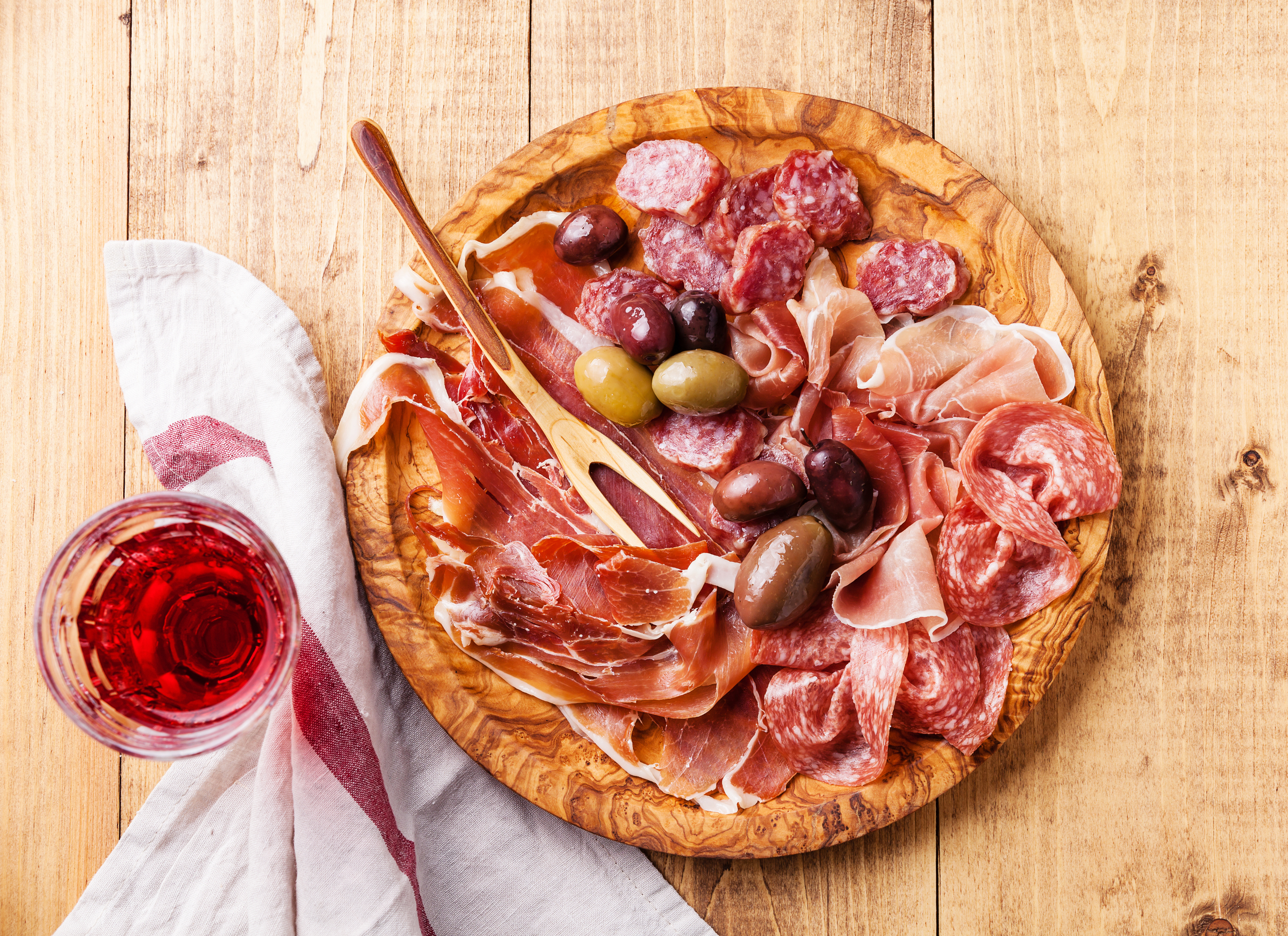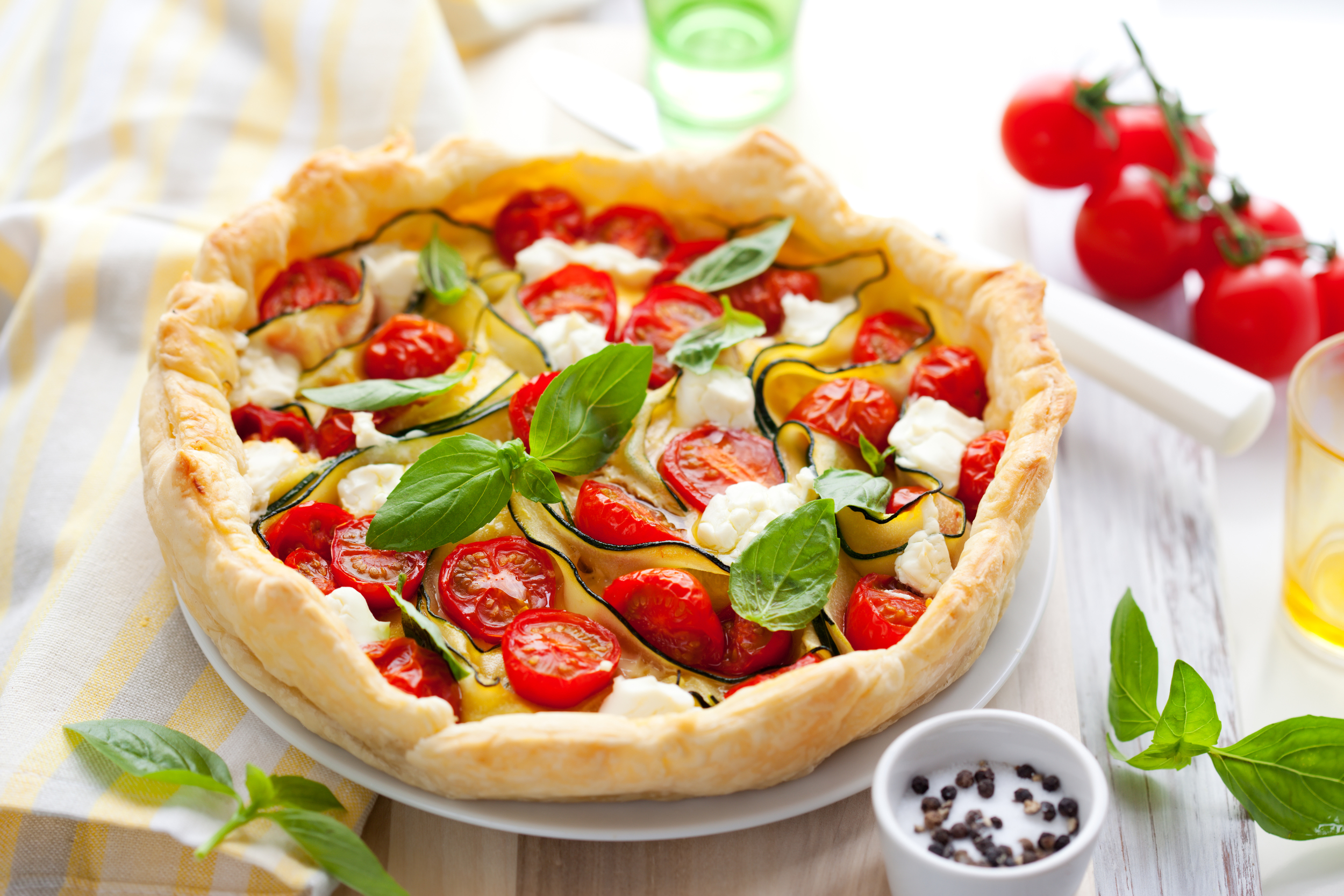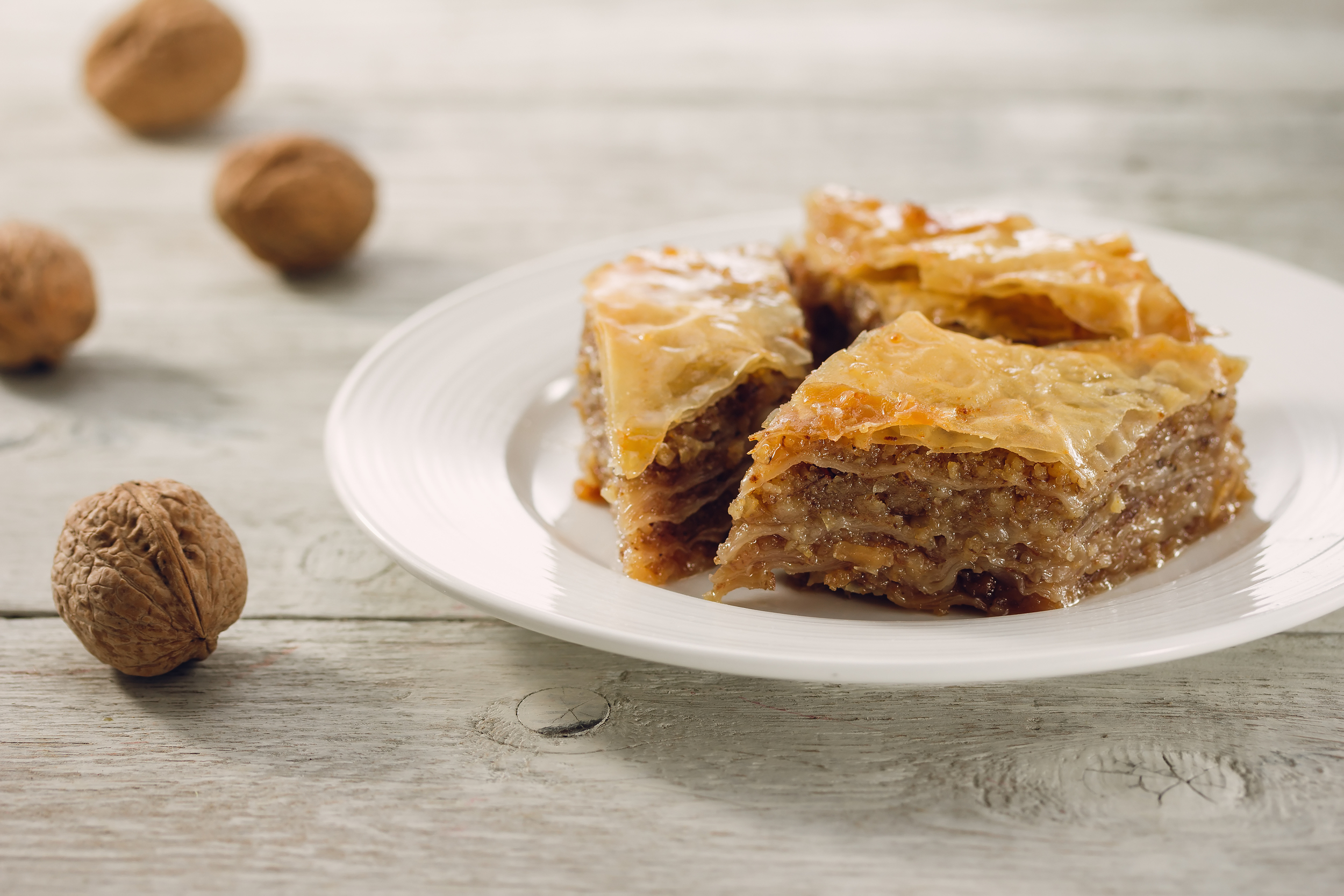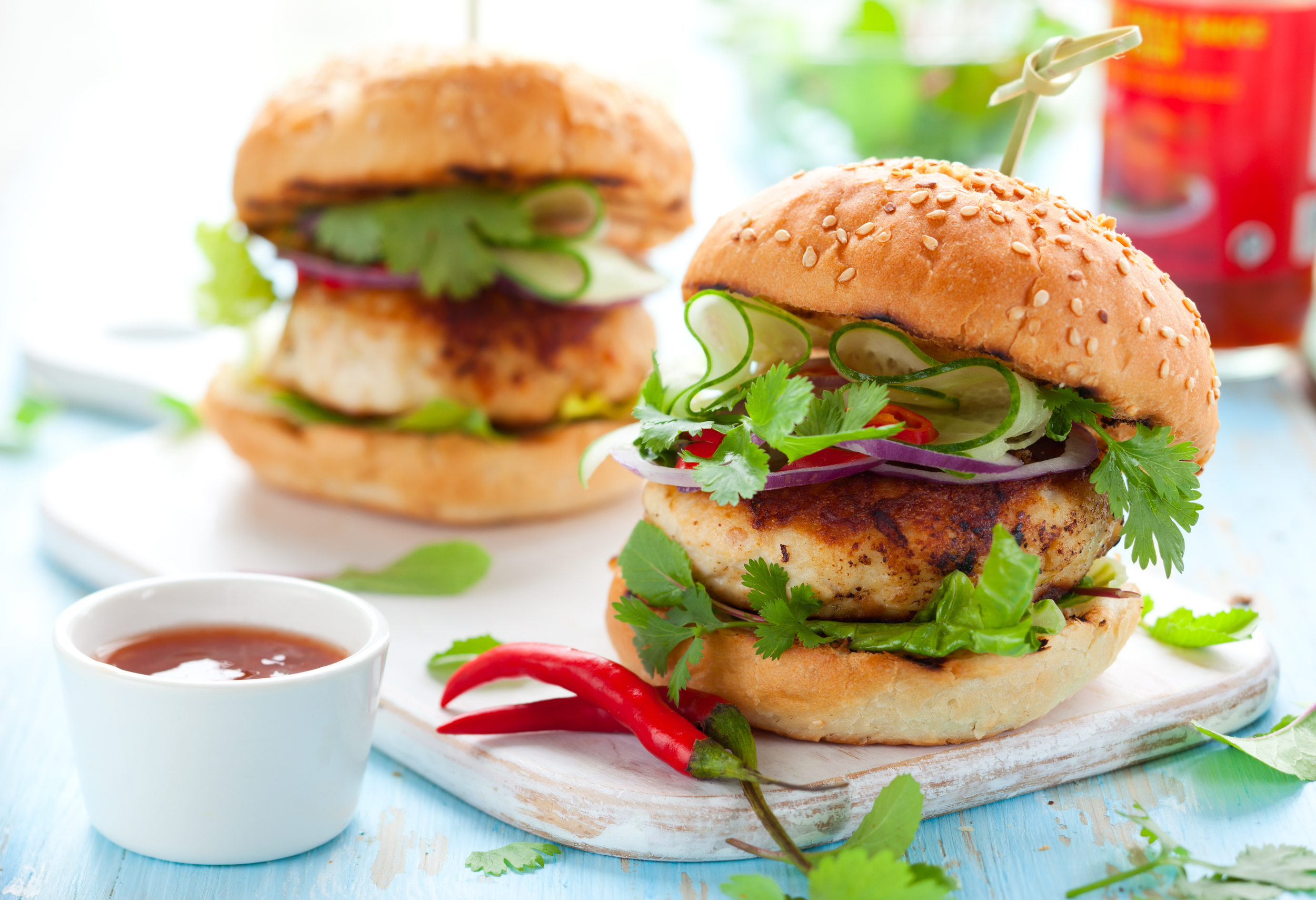Charcuterie Plate
Get this delicious and easy-to-follow Charcuterie Plate recipes at Haute Farms.
Charcuterie Plates
© Shutterstock
Creating a Perfect Charcuterie Plate
Ariane Daguin, owner of the cured-meat purveyor D'Artagnan, envisions the perfect charcuterie platter: "First, I would have a very nice cooked pâté, like a pâté de campagne and some good rillettes [shredded, cooked pork mixed with pork fat]. Then some air-dried meats. That's the part I love, so I need a lot of them. In addition to some good French jambon de bayonne, I'm also excited about duck prosciutto and wild-boar prosciutto. There should be two or three sausages, including some saucisson sec. And a cooked sausage, like a garlic sausage. Finally, good bread, cornichons and hearty red wine."
What belongs on a perfect charcuterie plate?
I think there should be a mix of cooked and air-dried meats, and a food with some amount of acidity to compensate for the meats' richness. For the acidity, for me, the best thing is cornichons—I love good cornichons. And on the side, some good bread.
How much meat should you serve per person at a party?
The more kinds of meat you have, the more people will eat. So, for a cocktail party, if you set out only one choice of meat, an ounce per person will suffice. With two or three different meats, two ounces total per person. More than three, three ounces. For a party that goes on longer than a couple of hours, or for a dinner party, double these amounts.
Is there an ideal knife for charcuterie?
For anything that's difficult to cut, I use a good chef's knife. For pâtés, a large blade that's very, very thin. Also, if you throw a party with more than 20 people, you don't want to slice everything by hand. You can get a perfectly good electric slicer for about $80.
What about an ideal wine?
Choose a red wine that will go with everything—a hearty one, but not a super-super-duper one, not like a Zinfandel. More like a Côtes-du-Rhône, or a Gigondas. Or a Madiran from southwest France.
A Charcuterie Cheat Sheet
FRANCE Jambon de Bayonne, the most well-known French dry-cured ham, is traditionally made in the southwest, near the Pyrenees.
ITALY Prosciutto is probably the most famous cured ham in the world. Coppa, made from pork shoulder, is equally tasty.
SPAIN Spanish dry-cured hams like jamón serrano are rubbed with sea salt, then aged a year or more. Lomo embuchado is cured pork loin.
GERMANY Real Black Forest ham is an air-dried, salt-cured, smoked ham from the forests near Freiburg; it's moister than prosciutto.
Dry-Cured Sausage
FRANCE Saucisson sec is primarily made from pork, seasoned with spices that vary by region.
ITALY Soppressata is a sweet-tasting, coarsely ground sausage; other classic Italian sausages include finocchiona and cacciatorini.
SPAIN Chorizo gets its characteristic tangy flavor from paprika. Fuet, whose name comes from the word for whip, is a long, thin pork sausage.
GERMANY Chewy, jerkylike Landjäger is smoked, as many German sausages are, and seasoned with caraway and garlic.
Cooked Sausage
FRANCE Garlic sausage, or saucisson à l'ail, is delicious by itself, but it's also a key ingredient in cassoulet; also try gently spiced boudin blanc.
ITALY Mortadella is flavored with pistachios, black pepper, wine and sugar, then steamed.
SPAIN Butifarra negra, made with pig's blood, is popular in Barcelona; butifarra blanca, made from pork, is seasoned with nutmeg and white pepper.
GERMANY Frankfurter, the original hot dog, is made from finely chopped pork and beef. Spreadable liverwurst is made from pork and pork liver.
Where to Find It
FRANCE D'Artagnan, dartagnan.com
ITALY Salumeria Biellese, salumeriabiellese.com
SPAIN La Española, laespanolameats.com
GERMANY Schaller & Weber, schallerweber.com
Taking the Cure
Marc Buzzio of Manhattan's Salumeria Biellese talks about cured meat—his family's business for over 80 years.
What is dry-curing?
Basically, it involves salting the meat, then keeping it in a cool room—around 55 degrees—for a very, very long time. The way I see it, it's drying meat the way it was dried by early man.
What's the best way to store dry-cured sausages and meats?
You don't have to refrigerate a dry-cured sausage, but if you do, it'll last about a year. Unrefrigerated, the shelf life is about three months. If you wait too long, the sausage won't necessarily go bad, but after a while you'll need a chain saw to cut the thing. Essentially, all the moisture will work its way out of the meat, and pretty soon the sausage becomes almost petrified. It becomes a weapon.
How do you keep a sausage from drying out if you've already served part of it?
One trick is to get a linen napkin, slightly dampen it, then put the salami in the vegetable bin in your refrigerator. A modern salami, from one of the big producers, has typically been so chemically treated that you could leave one out in August for a week and nothing'll happen to it.
Is there one sausage that really captures the salumi-making art?
Cacciatorini. They're tiny little salamis, traditionally eaten by hunters. To me a terrific cacciatorini is by far the most outrageous salami you can eat.
You Might Also Like
More Recipes and Ideas
MORE FROM HF
> Newsletter
> Contests
> Farms A-Z








